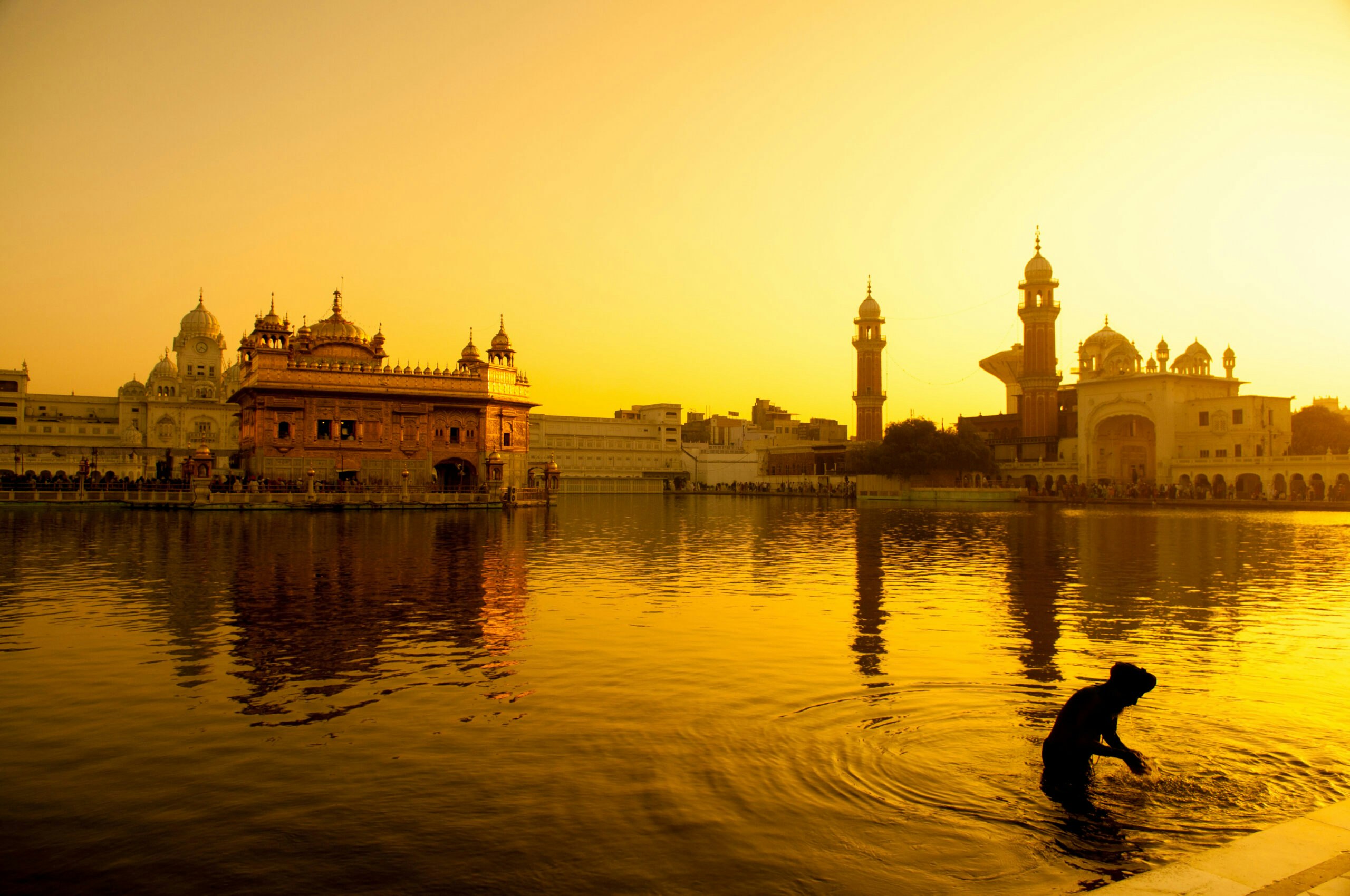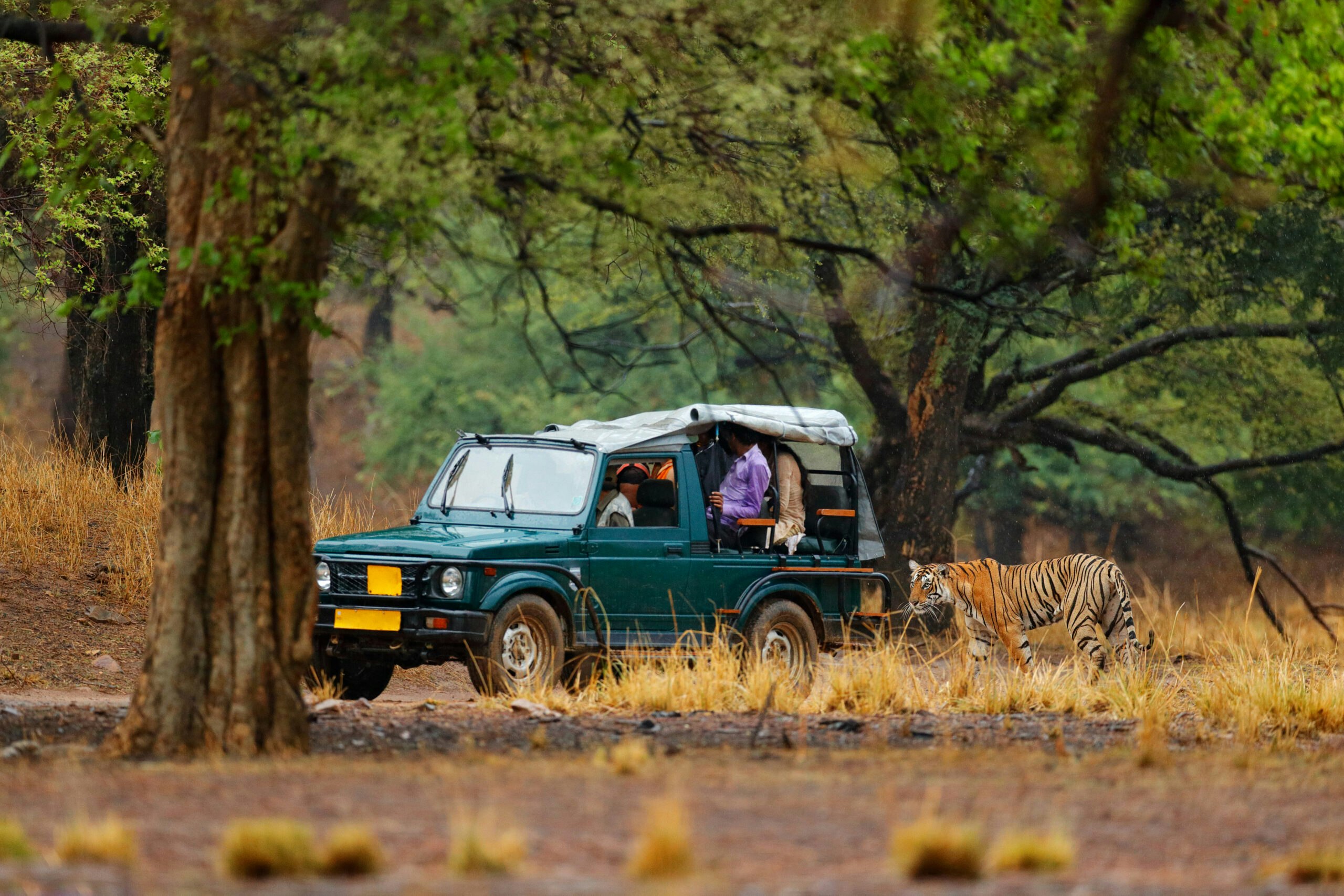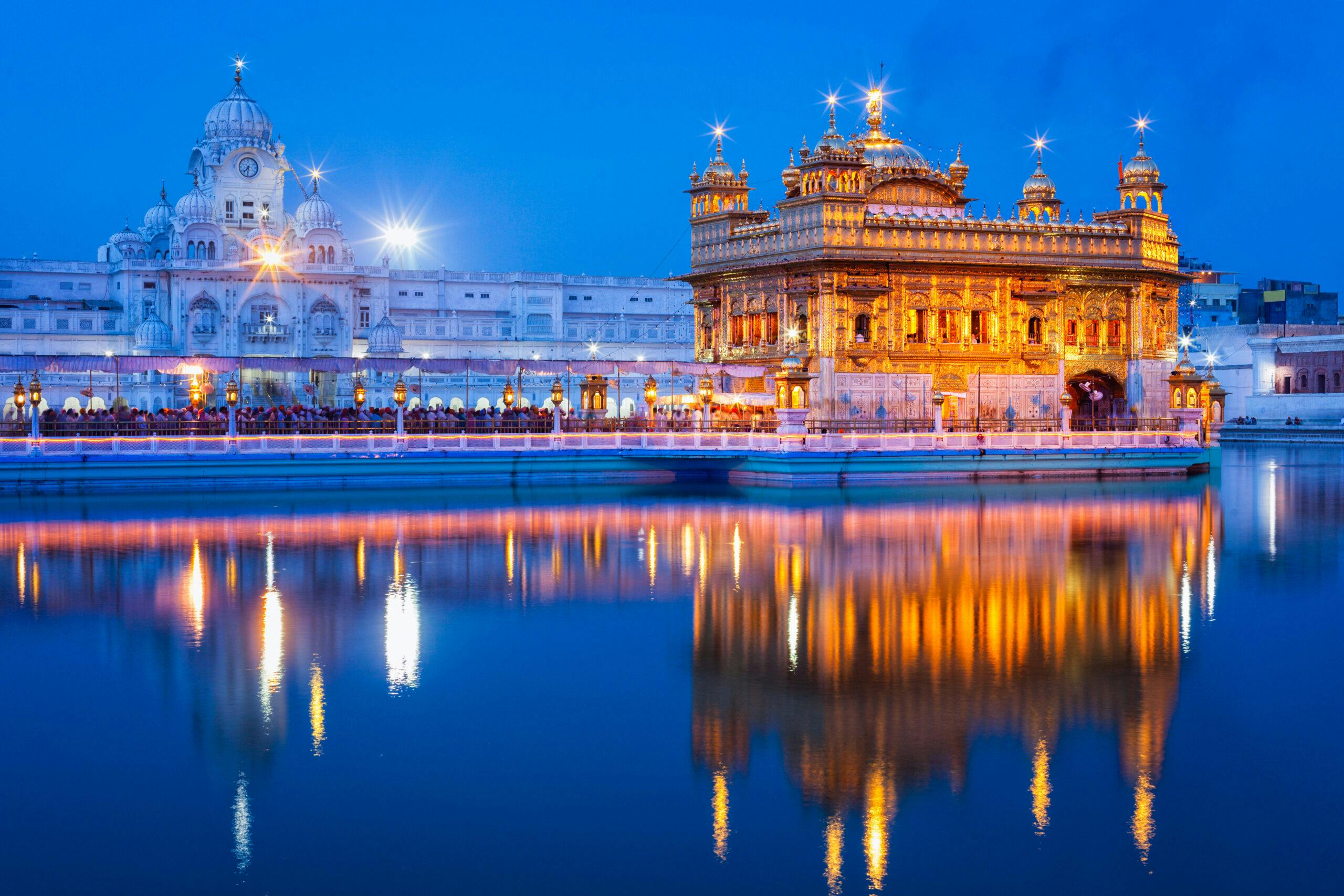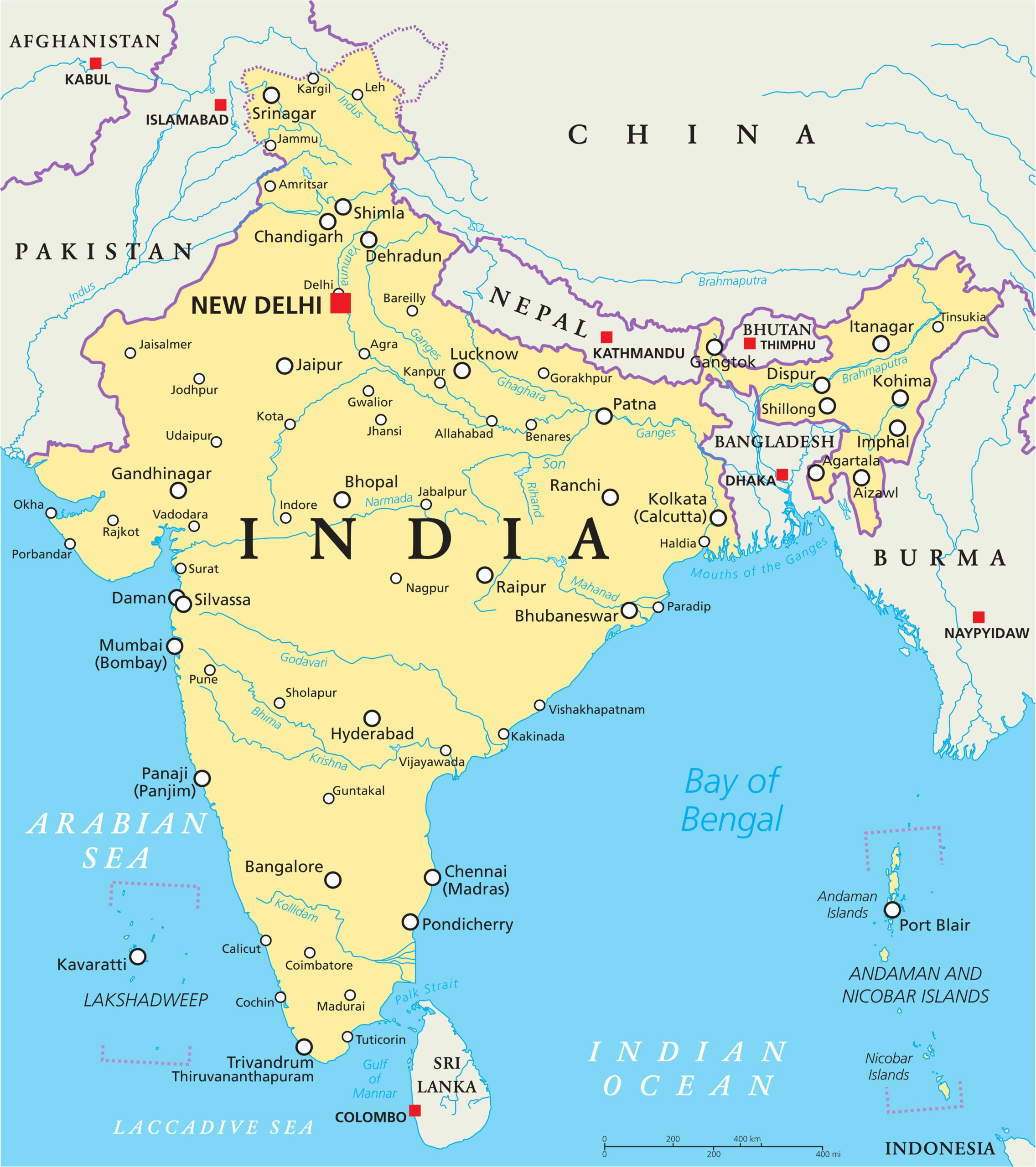Discover India
India beckons travelers with its incredible diversity and rich cultural history. The country offers a mesmerizing blend of ancient traditions and modern dynamism, making it an alluring destination for adventurers. Its vast landscape boasts breathtaking natural beauty, from trekking through the snow-capped Himalayas, to striking desert dunes and villages in Rajasthan, to dense jungles and golden plains inhabited by tigers and rhinos in national parks. Visitors can immerse themselves in a kaleidoscope of flavors with India’s tantalizing cuisine, explore historic landmarks like the Taj Mahal and Amber Fort, and witness the vibrant festivals and rituals that showcase the country’s deep-rooted spirituality.
Planning a trip to India? Read on to find out when to visit, what to do, and more to make your vacation unforgettable.
What is the best time to visit India?
Choosing the time of year to visit India depends largely on what part of the country you want to explore. India’s vast size means weather can range from hot dry days in the desert to snowy conditions in the mountains and humid monsoon days on the coasts.
Fall and winter (October-March) are best for most areas, including popular destinations such as bustling Delhi, Agra for the Taj Mahal, Rajasthan’s forts and palaces, central wildlife parks, and Goa and Kerala on southwest coast. The temperatures are generally cooler and more comfortable for sightseeing and outdoor activities like camel-riding and wildlife-watching.
Spring and Early Summer (April-June) is a wonderful time to explore the Himalayan foothills in Kashmir, Sikkim, and Ladakh when the conditions are ideal for trekking and exploring stunning mountain vistas. While temperatures rise uncomfortably on the plains below, these destinations are at their best with gardens and wildflowers in bloom and cooler climes for visiting northern temples and forts.
Shoulder seasons of early spring and late fall are transitional times when the weather may be less predictable but there are fewer travelers, making for a more private experience. Wildlife tends to be more active as the seasons change as well.
Festivals in India are another great way to choose the time of year you travel. Diwali and Holi are celebrated nationally, while the Pushkar Camel Fair or Himalayan monastery festivals are limited to specific locations and worth planning a trip around. Choosing the best time visit India can be complicated! Our experienced travel consultants are here to help you determine the best option for your dream trip.
What is the best way to get to India?
From the mainland United States, there are nonstop flights from New York, Chicago, Washington D.C., and San Francisco to New Delhi, as well as direct flights from New York and San Francisco to Mumbai. Flights take between 14 and 17 hours.
Most of MT Sobek’s India trips begin and end in New Delhi, a fascinating destination on its own. Delhi is the jumping off point for more remote locales, which often require internal flights to reach India’s best wildlife and cultural experiences.
How to get around India?
India has an extensive train network, one of the largest in the world, which is a popular and exciting way to travel between cities and regions. Indian Railways offers various classes of travel, from basic to luxury, and booking tickets in advance is advisable, especially during peak travel seasons. Another commonly used mode of transportation is buses, which vary in comfort and speed, so it’s essential to choose reputable bus operators for long-distance journeys.
For longer distances, travelers can access over 100 airports connecting India’s most fascinating frontiers with major hubs like Delhi, Kolkata, and Mumbai quickly and easily. Within cities, auto-rickshaws and cycle rickshaws are popular for short trips. For a more immersive experience, consider using local transportation like public buses and shared jeeps, which can be crowded but offer a chance to interact with locals and gain a deeper understanding of the culture. We recommend using caution if you want to try these sometimes hair-raising modes of transport.
The easiest way to navigate the sometimes hair-raising routes through the country is by private vehicle with an experienced driver. Our India Royal Rajathan Cultural Discovery Tour utilizes short flights between states, traverses dirt roads by private vehicle, crosses the desert in 4×4 jeeps, navigates city streets by tuk-tuk, rides in a camel-drawn cart, and cruises along lake shores and islands.
Do I need a visa to visit India?
American citizens need a visa to visit India. The e-Visa is normally valid for 60 days for a single entry and we recommend applying for it 2 months prior to travel. Passports should be valid for at least 6 months from the arrival date in India, and contain 2 blank pages for stamps on arrival. Citizens of other countries should check with their local embassy for entry requirements.
How many days should I spend in India?
India is a vast and diverse country. For a high quality experience, it’s best to limit yourself to a couple areas or themes, such as wildlife, rather than try to cover the whole country. Two to three weeks is ideal to get a good sense of the people, culture, food, architecture, landscape and mystery that is India.
Our India Secrets of Kashmir Cultural Discovery Tour explores Tibetan Buddhism in Dharamasala, the Sikh faith and temples in Amritsar, and reaches remote traditional shepherd communities around Pahalgam, Kashmir in just under 2 weeks.
What are the top 5 places to visit in India?
1. Delhi’s Extremes

India’s capital is a bustling metropolis, seamlessly blending age old traditions with modern technology. On one hand, it is steeped in history, home to centuries-old monuments like the Red Fort and Qutub Minar, which stand as testaments to its ancient roots. On the other, it is a bustling metropolis with a burgeoning tech industry, luxurious malls, and a dynamic urban lifestyle that epitomizes modernity. Chaotic and colorful markets can be found in Chandni Chowk and serene and soothing greenery at Lodi Garden. Amid these dualities, Delhi thrives as a place where tradition and innovation coexist in a complex and fascinating relationship.
2. Jaipur’s Desert Colors

Often referred to as the “Pink City,” Jaipur is a city that boasts a vibrant tapestry of colors. Its signature terracotta pink hue, which dates back to historic buildings erected in the early 20th century, gives Jaipur a distinctive and enchanting appearance. This pink color symbolizes hospitality and welcomes travelers with open arms. Beyond the pink facades, the city’s markets are a riot of colors, from the vivid textiles and intricate handicrafts found in the bustling bazaars to the brilliant saris worn by local women. The Amber Fort’s red sandstone walls, the blue houses of the old city, and the stunning jewelry and gemstones on display in the city’s shops all contribute to Jaipur’s reputation as a kaleidoscope of colors, where every corner reveals a new and captivating shade of Rajasthan’s rich palette.
3. Agra’s UNESCO-protected Treasures

A city steeped in Mughal history and architectural grandeur, Agra is home to two UNESCO World Heritage treasures. The most iconic of these is the Taj Mahal, a timeless masterpiece of white marble that stands as a testament to love’s enduring power. Built by Emperor Shah Jahan in memory of his beloved wife Mumtaz Mahal, the Taj Mahal’s intricate detailing, symmetrical gardens, and exquisite craftsmanship make it one of the world’s most recognized and cherished architectural wonders. The Red Fort of Agra, is another UNESCO-listed gem. This majestic fort complex showcases a fusion of Persian, Indian, and Islamic architectural styles and served as the main residence of the Mughal emperors for generations. With its towering walls, grand gates, and a maze of palaces and courtyards, Agra Fort offers a glimpse into India’s imperial history. Together, these two UNESCO sites make Agra a destination where history and romance intertwine with unparalleled beauty.
4. Amritsar’s Spiritual Center

Located in the northwestern state of Punjab, at the heart of Amritsar lies the Golden Temple (Harmandir Sahib), a gleaming, gold-adorned Sikh shrine and one of the most revered spiritual sites in the world. Its reflective waters and ethereal beauty create an atmosphere of tranquility and devotion that draws pilgrims and travelers alike. The temple’s stunning architecture and the community kitchen (langar) serving free meals prepared completely by volunteers to 50,000 visitors a day make it a unique and spiritually uplifting experience. Amritsar is also famous for its vibrant street food scene, with mouthwatering dishes like Amritsari kulcha and chole. Whether witnessing the (this is more raucous party than mesmerizing) daily lowering of the flags ceremony at the Wagah Border, exploring the historic Jallianwala Bagh, or indulging in the unmatched hospitality of the locals, Amritsar is a destination that leaves an indelible mark on the hearts of all who visit.
5. India’s National Park System

India is home to several remarkable national parks and wildlife sanctuaries, each offering unique experiences and opportunities to witness the country’s rich biodiversity. It’s challenging to single out one park as the absolute top, as the choice often depends on personal preferences and what type of wildlife and landscapes you want to explore. Here are some reasons to go:
Tiger Safaris: Bandhavgarh and Kanha National Parks are among the best places in India to spot Bengal tigers. With thriving tiger populations, visitors have a high chance of seeing these majestic big cats during their safaris.
Biodiversity: India’s National Parks are biodiversity hotspots, teeming with a wide variety of flora and fauna. Apart from tigers, you can spot leopards, Indian elephants, Indian bison (gaur), sloth bears, and numerous species of deer and antelope. Kaziranga is famous for its one-horned rhinoceros population and you can see India’s own Big 5 in this park (might want to mention its Big 5!). Many parks offer excellent birdwatching opportunities.
Scenic Beauty: Known for their stunning landscapes, India’s National Parks range from dense forests and rolling hills to grassy meadows and wetlands. The scenic beauty alone is worth the visit, with ample opportunities for nature photography.
Conservation Success: Each park has its own conservation program, with several playing a crucial role in tiger conservation, while others focus on rhinos or other endangered species. Visiting these parks supports ongoing conservation efforts.
These national parks are generally open from October to June, with the best wildlife viewing opportunities during the cooler months of November to February when animals are more active.

What are the best adventure tours in India?
1. India Royal Rajasthan Cultural Discovery Tour
North India has long been at the epicenter of the nation’s history. Whether it’s the scenery or the spoken word, diversity abounds, revealing a welcoming blend of peoples, religions, and languages. The romantic state of Rajasthan is known for its striking desert landscape and colorful festivals, and its towns – Jaisalmer, Jodhpur, Udaipur, and Jaipur – are resplendent, with stunning forts and opulent palaces. Not a day will go by that you’re not treated to stunning photo ops and wooed by the region’s whimsical charm and regal past. End your trip with an unforgettable sunrise visit to the Taj Mahal!
2. India Wildlife Wonders Adventure Tour
Journey through enchanting ecosystems filled with wondrous wildlife, including Bengal tigers, in India’s Bandhavgarh, Kanha, and Kaziranga National Parks. Follow expert guides on exciting safari drives, then relax in comfort at serene jungle lodges. Starting in Bandhavgarh, discover a plethora of spectacular flora and fauna that lives amid the preserve’s forests and grasslands. Wake at dawn in Kanha, ready for a jungle safari in “the Ngorongoro of India” and return to camp for Indian cooking classes or a chance to visit a local school. Finally, meet one-horned rhinos in Kaziranga and look out for its Big Five game. All the while, you’ll learn about current threats to wildlife survival in India, and explore what steps can be taken to save these precious animals. MT Sobek is a proud supporter of the Fund for the Tiger, which helps endangered Bengal tigers in India’s Bandhavgarh National Park and beyond.
3. India Sikkim Kanchenjunga Ridge Trekking Tour
Get up close to Kanchenjunga, the world’s third-highest mountain. Begin your epic adventure at Uttarey and ascend Singalila ridge towards Goechala. Enter dense forests of pine and rhododendron trees in rhapsodic bloom, passing prayer flags, yak herders and local Sherpa villages scattered throughout the valley. A remote route, this trail to Kanchenjunga’s ridge does not see many other trekkers. Join the rarified few who have braved the border straddling Nepal, Sikkim and West Bengal. Take in the majesty of sacred, high-altitude lakes and sunrises with striking Himalayan views.
4. India Secrets of Kashmir Cultural Discovery Tour
Unravel the mysteries of Kashmir, recently opened to tourism, on this behind-the-scenes journey through one of India’s most remote regions. Hike the pristine mountains around Srinagar, take tea with local villagers, visit Lake Dal’s vibrant floating market, and tour the mythical “Seat of Solomon.” Experience the deep spirituality of the Dalai Lama’s community in Dharamsala, behold the magnificent Sikh Golden Temple at Amritsar, and witness the colorful pageantry of the Wagah border ceremony. All this plus classic Tibetan, Indian, and Kashmiri meals equals the cultural exploration of a lifetime!
Where are the best places to stay in India?
The range of accommodation in India is as diverse as its landscapes and people. India’s fascinating history has resulted in numerous historic and palace hotels. Spending evenings in a fully restored property fit for royalty is an experience most travelers won’t want to miss!
Of course, there are other luxury hotels offering a more modern experience with all the conveniences of top-notch amenities, world-class service, fine dining, and spa facilities.
India has a growing selection of eco-friendly hotel options. With a focus on sustainability and minimizing their carbon footprint, these properties seek to attract the environmentally conscious traveler. Yoga retreats and ashrams offer courses in meditation, yoga, and self-discovery in serene surroundings. For those on a budget there are many options including guesthouses, hostels, budget hotels and homestays.
1. Taj Mahal Hotel – New Delhi

Dignitaries and heads of state visiting New Delhi prefer the Taj Mahal Hotel given its stateliness, its timeless hospitality and service, its original culinary innovations, and the quiet, restrained luxury that permeates every guest’s stay. Central to the Taj Mahal Hotel’s prominence is its old-world grace and charm, blended effortlessly with contemporary comforts and amenities.
2. Jai Mahal Palace – Jaipur

Set amidst 18 acres of beautifully landscaped Moghul gardens, this incomparable palace dates back to 1745. Jai Mahal Palace is an opulent masterpiece in the Indo-Saracenic style of architecture, blending spotlight-grabbing opulence with tantalizing comforts that transport guests to a world of Rajasthan magnificence. It is located downtown, close to the main shopping center and historical monuments.
3. Rohet Garh – Jodhpur

The Rohet Garh is a well-known heritage hotel offering comfortable accommodations in a serene lakeside setting. The property’s beautiful gardens, sprawling lawn, and variety of musical birdlife complement traditionally inspired, carefully furnished rooms. Guests can revel in the Tattva Spa’s soothing treatments and therapies, and in the mastery of the Rohet Garh chefs, who enthusiastically serve the finest traditional regional cuisine.
Things to know about India
While Africa’s Big Five are more well-known, India wildlife-watchers can try to check the Indian elephant, one-horned rhino, Bengal tiger, India leopard and Asiatic lion off their list. Yoga was first developed in India over 5,000 years ago. The country’s film industry, known as Bollywood, produces more films than anywhere else in the world. Referred to as the “Land of Spices”, India played an important role in early trade routes for exotic spices.
What is the language in India?
Although English and Hindi are its official languages, India is home to over 1,600 spoken languages. The constitution recognizes 22 languages, each associated with the state or region in which they are spoken. For instance, Urdu is spoken primarily in the Indian state of Jammu and Kashmir, as well as in parts of Uttar Pradesh, Bihar, and Telangana. Hindi is the most widely spoken language in India and serves as the official language of the Indian government. It is spoken by a significant portion of the population, primarily in the northern and central regions.
What to eat in India?
In Northern India, you’ll savor aromatic dishes like butter chicken, a Delhi specialty; biryani, a spiced rice dish mixed with vegetables and meat of Muslim origin; and meats and breads cooked in a clay tandoori oven. Southern India offers a different selection with dishes like dosa, a large savory crepe; idli, a type of rice cake; and sambar, a tamarind-broth stew. In the west, Gujarati cuisine has its own savory cake called dhokla and the thali—many small dishes served together with rice and bread. Eastern India offers hilsa fish curry, and luchi, a deep fried flatbread. India’s street food is legendary, offering a diverse range of treats such as chaat (the Indian version of vegetable hash), pani puri (deep-fried batter globes filled with savory vegetables), and vada pav (potato dumpling sandwich). Top off your meal with rich desserts like rose-water infused gulab jamun, and kulfi, the Indian take on ice cream. Regardless of where you are in India, every meal is an adventure of taste, color, and tradition.
What is the currency in India?
The local currency in India is the Indian Rupee (INR). The rupee is further divided into 100 paise. Banknotes come in various denominations, ranging from INR 10 to INR 2,000. ATMs are readily available in urban and semi-urban areas, facilitating easy cash withdrawals. Most international airports have currency exchange counters open 24 hours making them an easy way to change money on arrival. Most banks in India are open 10:00 am to 4:00 pm Monday through Friday and 10:00 am to 1:00 pm on Saturdays. Authorized money changers and exchange bureaus are available in major cities and tourist areas and have extended hours, typically open 9:00 am until 6:00 pm or later.
It’s important to note that the acceptance of credit and debit cards can vary, so it’s advisable to carry some cash, particularly when traveling to more remote areas. We recommend you exchange cash or withdraw some from an ATM at your first available opportunity to avoid missing out on planned activities later in the tour.
What is the electricity in India?
India is on the 220V – 240V system and uses type C, D and M outlets. Check the voltage on your personal electronics chargers to determine if you need a voltage converter, but most US travelers will need a converter as US electronics are 110-120V (type A or B outlets). A good resource to see images of plug types is www.power-plugs-sockets.com.
What is the time zone in India?
India Standard Time (IST) is the time zone observed throughout India, a holdover from British rule, when it was thought of as a symbol of unity. IST is 5 hours and 30 minutes ahead of Coordinated Universal Time (UTC+5:30). Unlike some countries that observe daylight saving time and adjust their clocks seasonally, India maintains a consistent time zone throughout the year. This means that the time difference between India and other countries remains constant, allowing for easier scheduling and coordination for international travelers and business transactions.
What to wear in India?
India experiences a diverse range of climates due to its vast size and varied topography. Broadly speaking, India can be categorized into three major climatic regions: tropical, subtropical, and alpine. In the northern plains and most of the country, there are three primary seasons: summer (hot and dry), monsoon (rainy), and winter (cool and dry). Coastal regions experience a tropical climate, characterized by high humidity and warm temperatures year-round. In contrast, the northern Himalayan region experiences an alpine climate with cold winters and heavy snowfall.
For travel in any region you will want to bring layers so when the temperatures cool in the evening or heat up during the day you can adjust your clothing appropriately. While it’s tempting to pack shorts and sleeveless shirts for the heat, India is a modest country where covered shoulders and knees are appropriate, particularly for women travelers. Choose loose-fitting clothing to be comfortable and culturally appropriate in the heat. We recommend synthetic wicking fabrics that are lightweight and dry quickly. For cooler weather in the evenings or high in the Himalayas be sure to pack a fleece jacket and other warm layers.
Finally, comfortable walking shoes are a must, and a pair of mid-weight hiking boots will be best for a trekking tour. Also consider that shoes are removed when visiting temples, so consider a pair of slip-on shoes for touring.
Consult an Expert for India
We hope this advice is helpful in planning your trip. Consult one of our experts to plan your India trip and get the latest advice on your destination.





